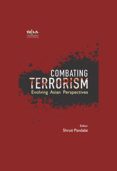Rockets in Maoist Arsenal
Rockets in the Maoist arsenal may seem, presently, to have nuisance value. However, the possibility of the Maoists acquiring greater capability to fire the rockets with accuracy cannot be ruled out. Many strategic and static locations would come under threat with disastrous consequences.
- P. V. Ramana
- May 10, 2013









